One of the biggest disappointments you may face when entering the self publishing market is this plain fact:
Your book is not for everyone.
And that’s exactly why you should have a clear idea on who is your potential reader, aka your target audience.
So let’s take a look on how to find your book target audience in this step by step guide.
Why each writer needs to have a clear picture of the target audience for book marketing
To become a successful author you should start thinking as an entrepreneur. Think of your book as of a product. And your main task is to come up with the right book marketing techniques to present it.
Just think for a moment of the benefits of knowing how to find your book target audience.
First of all, you will be able to understand the true motives and behavior patterns of the readers in order to adjust the book plot, its characters and elements so that your audience can relate to it.
Besides you will learn how to speak with the potential reader and to provide real help, inspiration and guidance. While writing you will have an aim and extra motivation just by knowing how much value your book will bring to the audience.
Finally, you get to create personalized marketing techniques and learn which channels your readers prefer. You will be able to reach your target audience immediately and, frankly speaking, save tons on marketing.
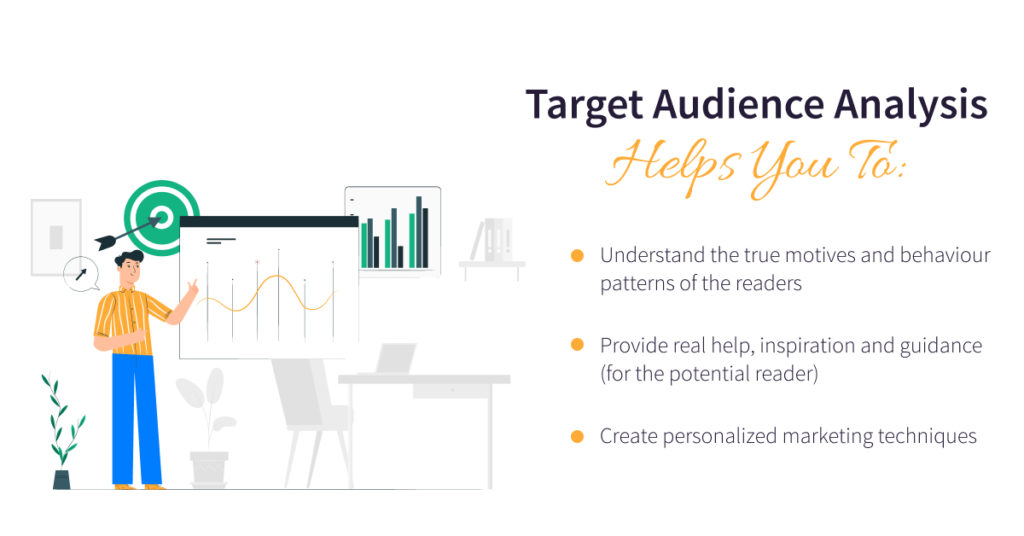
Sounds appealing, doesn’t it? So let’s get to the point.
How to determine the target audience for your book?
It’s time to address the elephant in the room and switch from theory to practice. Follow these three main steps to learn and understand better how to find your target book audience.
Step 1 Write a value proposition for your book
That’s right. Your book as any other product or service on the market should have a clear value proposition.
Briefly speaking, we are looking for the reason a person should buy your book. The more accurately you can communicate the benefit of your book, the higher the chances your reader would think “Yeah, this is exactly what I need right now”. Otherwise readers won’t care much if they can not picture the value the book provides to them. So you should better be able to answer the following questions:
- What is your book about?
- What is the main message of your book?
- Why do your readers have to buy your book? Why does your book matter to them?
- How does it benefit your readers?
- What emotions does your book evoke?
- How is your book different from all the others on the same shelf?
Now, test yourself a bit. Come up with a few statements to express how your book can bring value to someone’s life and teach important lessons. Start by making a list of 15-20 keywords or phrases that describe your book. Some examples might be:
“A story of a boy and a girl who are destined to meet and fall in love. The events take place in a magical land of mysterious creatures that evoke your imagination and thirst for adventures. A well designed multi faceted magic world, that you have never encountered before. My book makes readers believe in the true values of love and friendship that can change the world. It also helps readers reduce the negative self-talk that gets in the way of their enjoyment of life.”
Here is how your value proposition may look like:
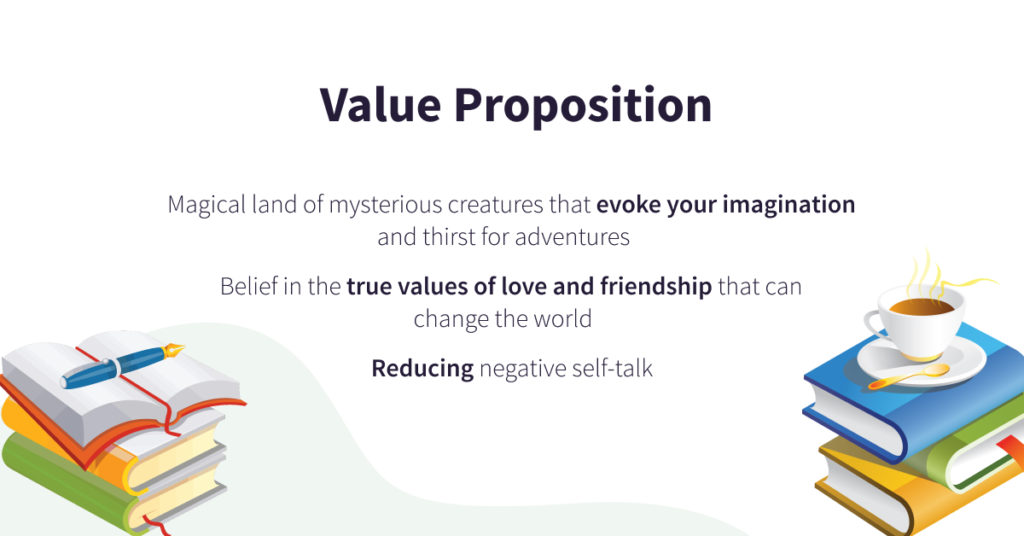
Step 2 Identify and research your target audience
Create your audience persona (another fancy term we will borrow from the business world) to help you understand better how to find your book target audience.
To begin with, try to describe the target audience in your own words, right now. Find people who already enjoy reading the books of your genre (start with your existing readers, then analyze your competitors’ audience and reviews of their books).
After this, list everything that comes to your mind at this very moment based on the information and feedback you have collected. Such method helps to create a portrait of your target audience based on your own experience, rather than adjusting information to common stereotypes.
Now you can proceed to create a more detailed image according to two factors, demographics and psychographics. Let’s take a closer look.
Demographics (Who is your audience?)
- Gender
- Age
- Income level
- Education
- Family status
- Occupation
- Social status
Psychographics (How does your audience think? Why will they be interested?)
Analysts believe that the most important psychographic term is IAO, which stands for:
- Interests
- Activities
- Opinions
These three components are the basis for research in psychography. They are quite complex though, since IAO are formed by the cultural environment, social status, current economic situation, and are significantly affected by the upbringing and self-identification of the person.
Additional psychographic factors
- Emotion/ feelings
- Values
- Life challenges
- Cultural background
- Desires
- Fears
- Needs
- Political/ religious views
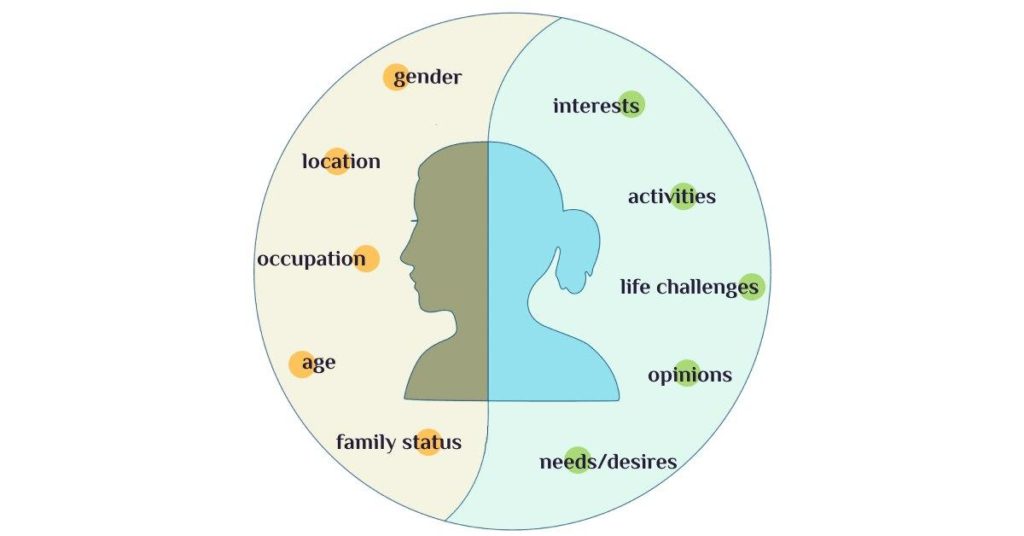
To sum up, while demographic data can be described as raw material, often even physical characteristics; psychographic data, on the contrary, features more complex and abstract individual information.
Enough talking: let’s say you have gathered all the necessary information and tried to come up with a real person that matches the description. You might be looking at something like the example below, and now your main task is to visualize your target audience as much as you can and write a book just for them. Give it a try!
Example
Rachael is 32 years old and lives in Brooklyn, New York with her fiance.
She has a graduate degree from a moderately prestigious college and works as an HR manager at an average sized international company, yet she doesn’t feel totally happy with the career development she has accomplished there.
Rachael rapidly goes through the Cosmopolitan magazine every morning over breakfast and finds articles on relationship topics extremely amusing. She prefers to go to yoga class on Fridays, and orders Chinese take out food on the weekend. Rachel spent her last vacation backpacking around East Asia. She is not really religious but is fascinated by astrology, she likes listening to astrological podcasts and is thinking of completing an online course in that field.
Rachel has no kids on her own and her fiance thinks that they should stay firm on their feet first before planning a bigger family. She likes to help out her brother and babysit his twins every now and then.
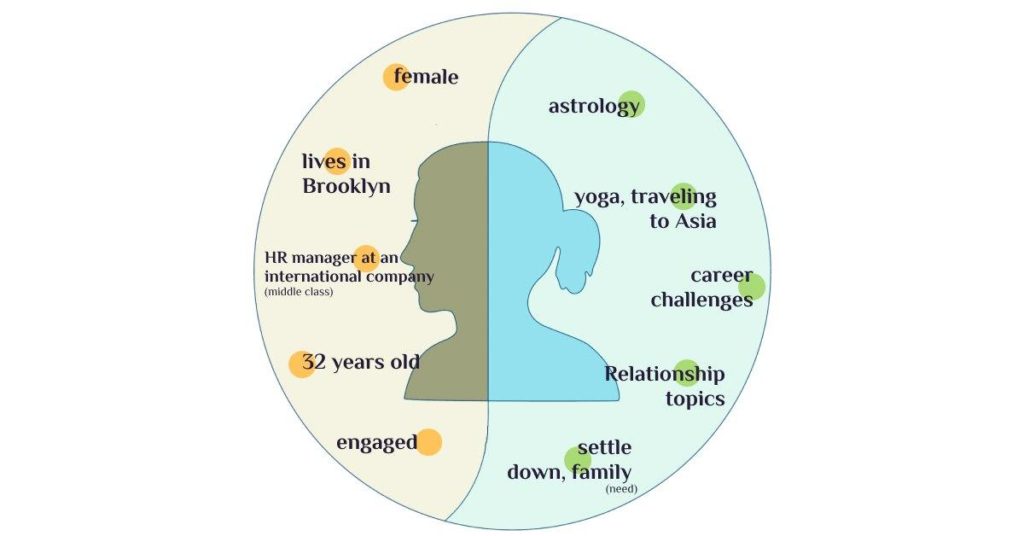
Based on the description we can assume that Rachael most probably would be interested in the science fiction romance book.
- The main character could be a strong ambitious woman (career).
- The events might take place in a far away galaxy or another universe (astrology hobby), maybe some inspiration could be found in Star Wars.
- There could be a complicated love story present, with a moral dilemma and different vision for the future. The main couple might not even speak the same language (Cosmopolitan articles, fiance, children). Dig into Eat, Pray, Love.
- The plot might have some Asian elements (take out food, vacation). Stop by Memoirs of Geisha for another portion of inspiration. Or add creatures that are widely popular in Asian culture, for example dragons.
Step 3 Find, develop and connect with your target audience
Social media is a great place to connect with your readers and as a result understand them better.
First of all, use already available resources, by which we mean your existing audience. Assuming you have a Facebook and Twitter profile with a decent amount of subscribers and fans, try to check out the insights tools on each platform to understand more about your existing target audience.
Facebook Audience Insights can provide you with a pretty good idea about your readers’ demographics, interests and values and provides useful tips on how to find your (book) target audience.
Twitter Advanced Search shows you who is looking for and talking about your book. The tool also tells you what reactions people display as well as what other materials they are sharing, which is very helpful to get more information on the psychographics.
You should also use your social media platforms to engage with your readers (just talk to them, they don’t bite). A useful way to do so, might be creating a survey. There are many tools around the web that you can use to design a user friendly questionnaire.
Once you are done, hit the publish button on your social media channels and distribute the survey to your email list, encouraging readers to participate. Don’t forget to mention why they should answer these questions and what benefit they get from it.
Turn your competitors into your strength while researching their target audience.
Analyze the genre and readers of your competitors. Read the reviews of your competitors’ books to find out what readers enjoyed the most. There are plenty of resources such as Amazon or Goodreads that can help you with this task.
Simply choose a book that has a similar vibe to yours and check what people are saying about it.
Starting from the plot twists they liked the most and moving on to the details that should rather be omitted to avoid overwhelming the readers.

Once you are done with that, test if your assumptions are correct by researching what the current trends are. We are back on the entrepreneurial track here.
Check the keywords that you gathered from your existing and competitors’ audience to see how much they reflect the modern world. Use the Google Trends and Google AdWords tool to check how many people searched for them and what additional details they included, to use it as another of your advantages.
Once you enter your keyword or key-phrase, Google will generate all the results and give you some grouping suggestions. Let’s say if you enter the phrase “fiction book”, Google suggests similar searches which are also observed with the phrases “fiction book for teens” and “fiction book series”, which can give you some ideas on the relevance if you were considering those options.
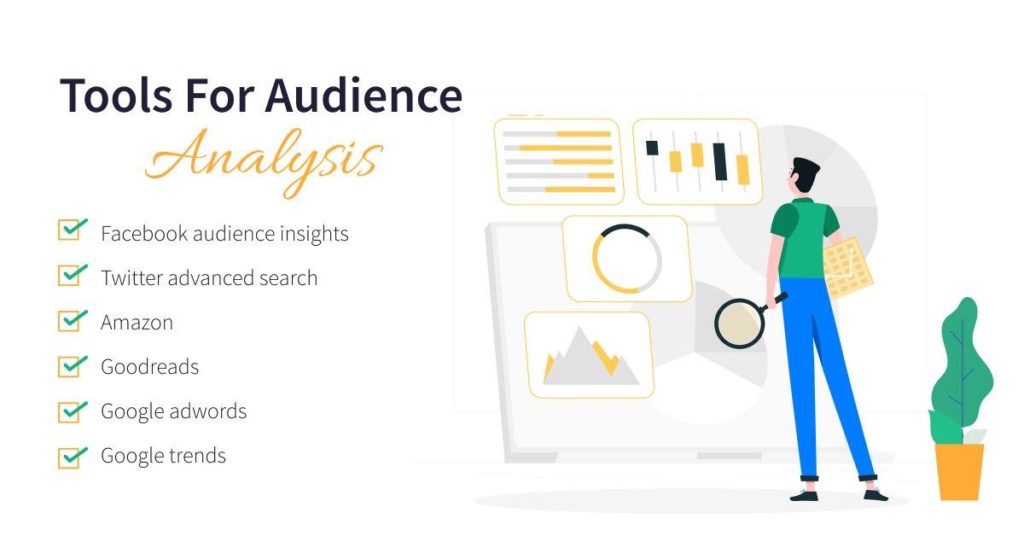
Where to find and how to develop your target audience
On the other hand, if you do not have your own fully established target audience, we strongly recommend you to research and join different communities, connect with influencers, in other words expand your network.
We’re pretty sure that you are aware of the fact that nowadays you can find anything and anyone online. This is a great opportunity to share interests, opinions, give and receive feedback and simply connect with like minded people.
Take a look at some existing self publishers’ communities and see if any of them appeals to you. Let’s say Nanowrimo is considered to be a great place to connect with young writers and educators, and help to track progress of your work on and off the page.
Also Writing.com is an online community that helps creative souls get together and establishes in some way a family of writers.
Don’t forget about different forums, like Absolute Write or Reddit (don’t even get us started on this one, you can find literally everything here) where you can get a piece of advice on anything you’re dealing with right now from people who are in the same boat.
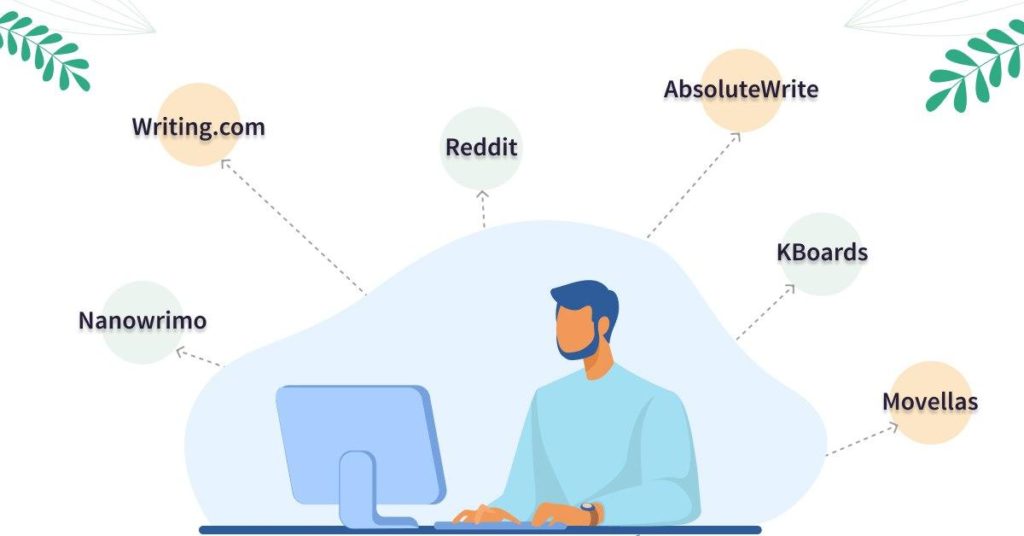
All you need to do is a bit of web research and you will be able to find all the answers to your tricky questions. For example, you can start by checking out this Suggest me a book subreddit, that gives you a whole bunch of ideas from actual readers regarding their genre expectations. Told you, Reddit can easily boost your book marketing efforts !
Last but not least, you can also check out reading promotion campaigns, which sometimes can be a great source of inspiration. It is impossible not to mention the campaign Second Life of the Book, that takes place in Poland and simply invites book worms to gather around and exchange an old book for a new one.
Become someone else has also gained enormous popularity not only in Lithuania, where it was originally introduced, but also worldwide. The main message is simple: when reading the book, you can become whoever you want!
Finally The Vorsicht Buch Advertising Campaign gained a lot of popularity in Europe and has come to the attention of the audience thanks to its originality. The latest update on the movement is its partnership with Condor airline to promote reading on vacation. Now travelers on Condor are allowed one extra kilo in their hand luggage just for books. How awesome is that?
Conclusion
I hope you’ve found some really great ideas on how to find your book target audience and will be ready to use them right away.
What strategies and tools do you use to get new readers? Share your insights in the comments below.



